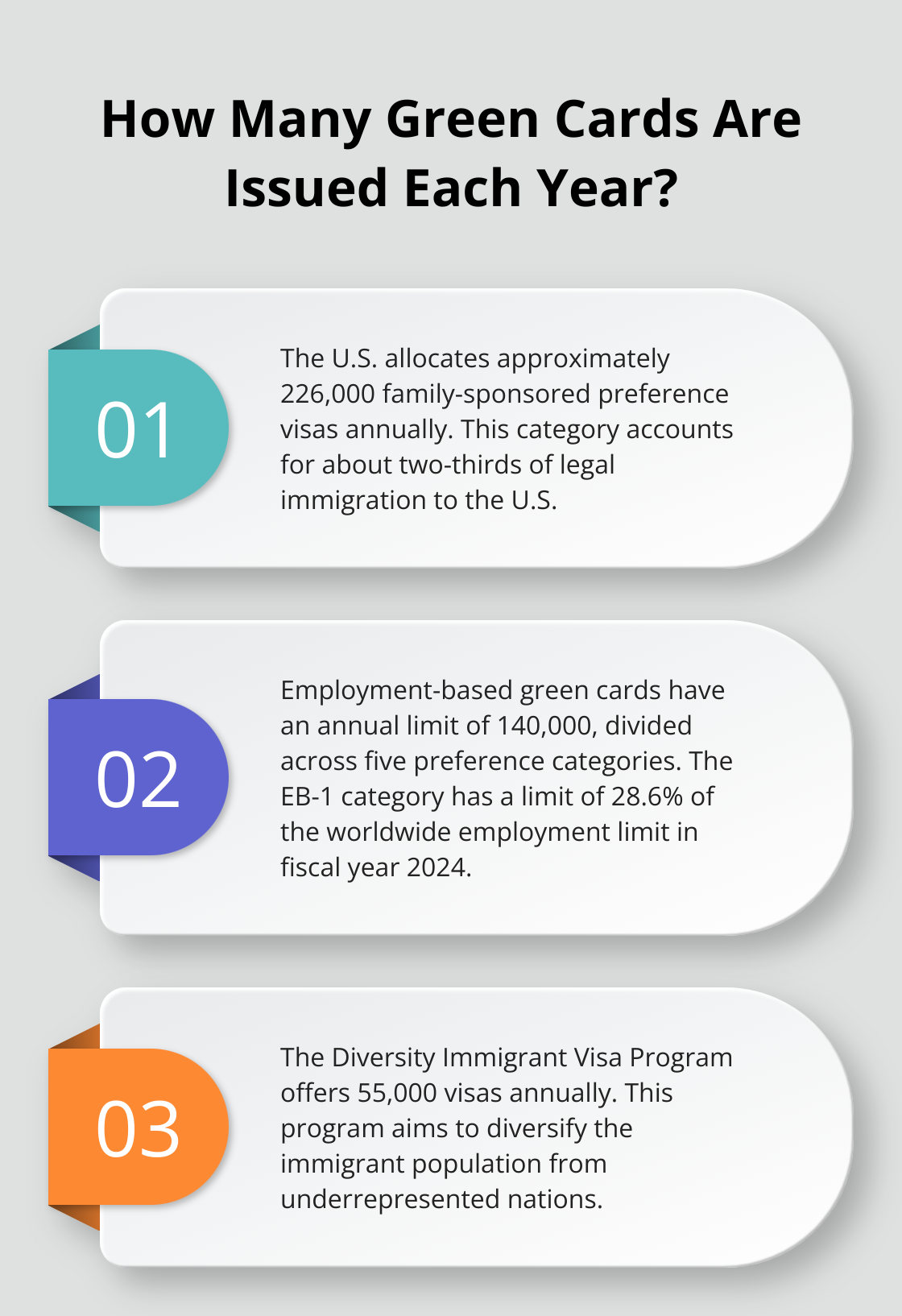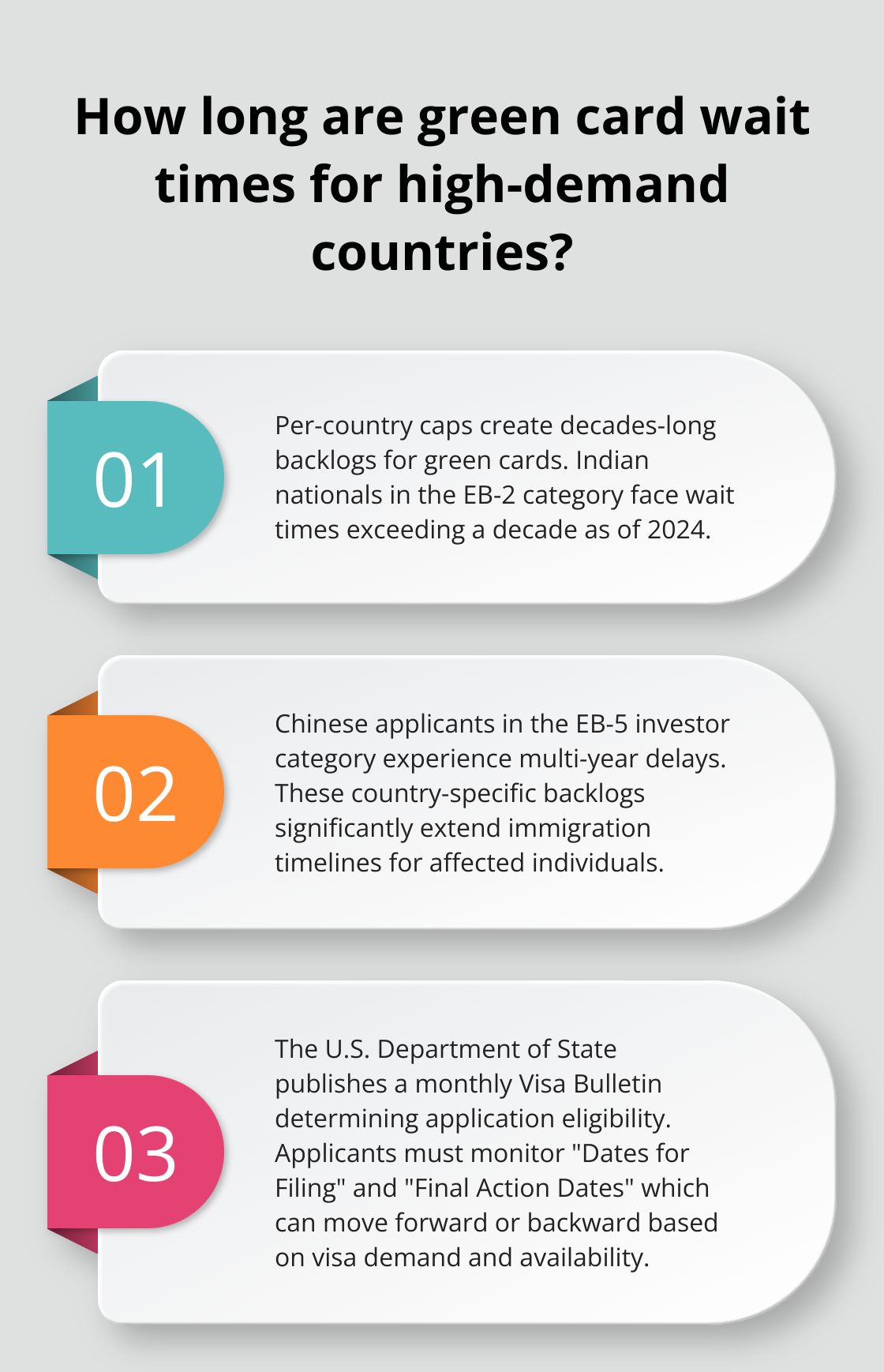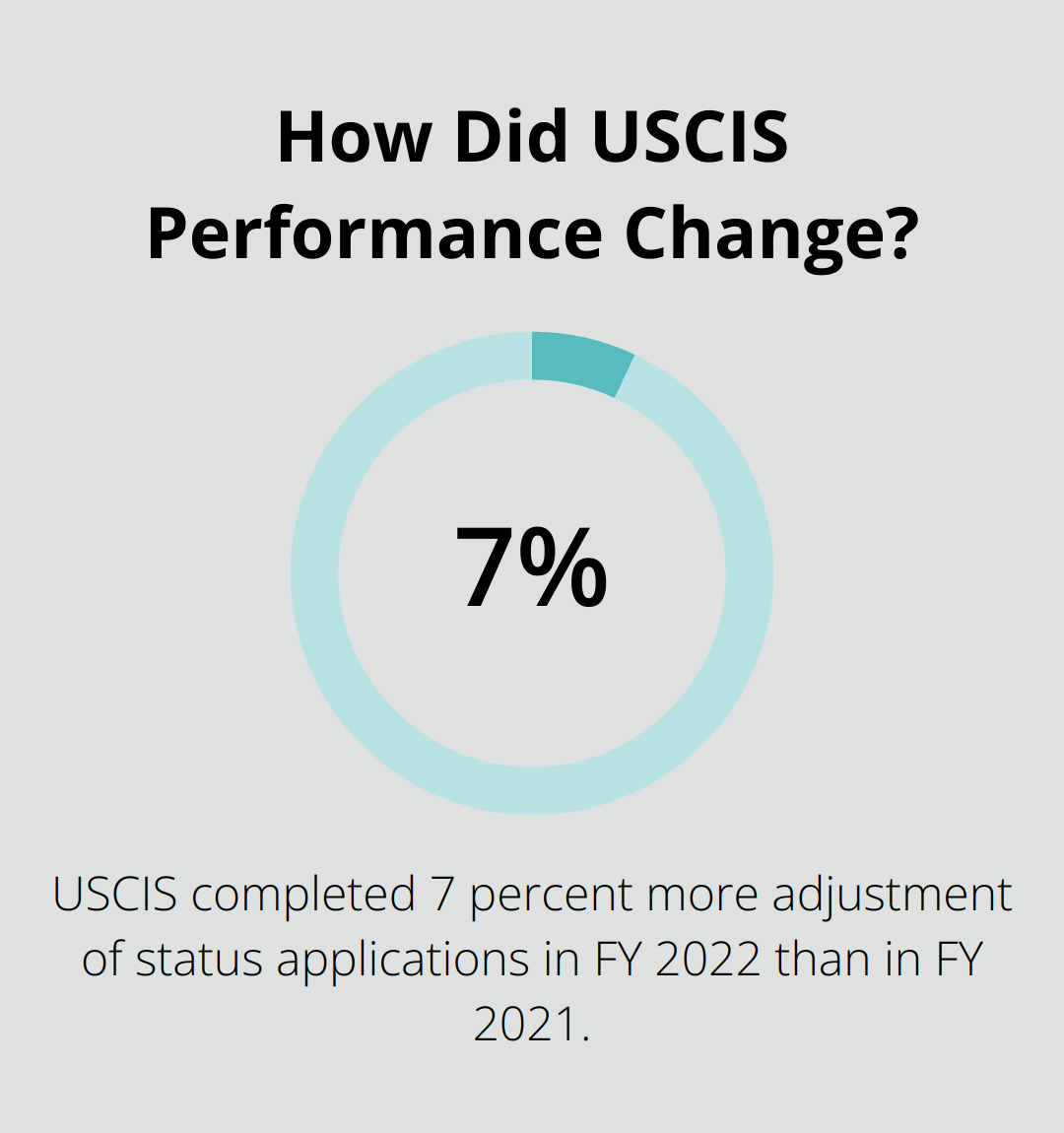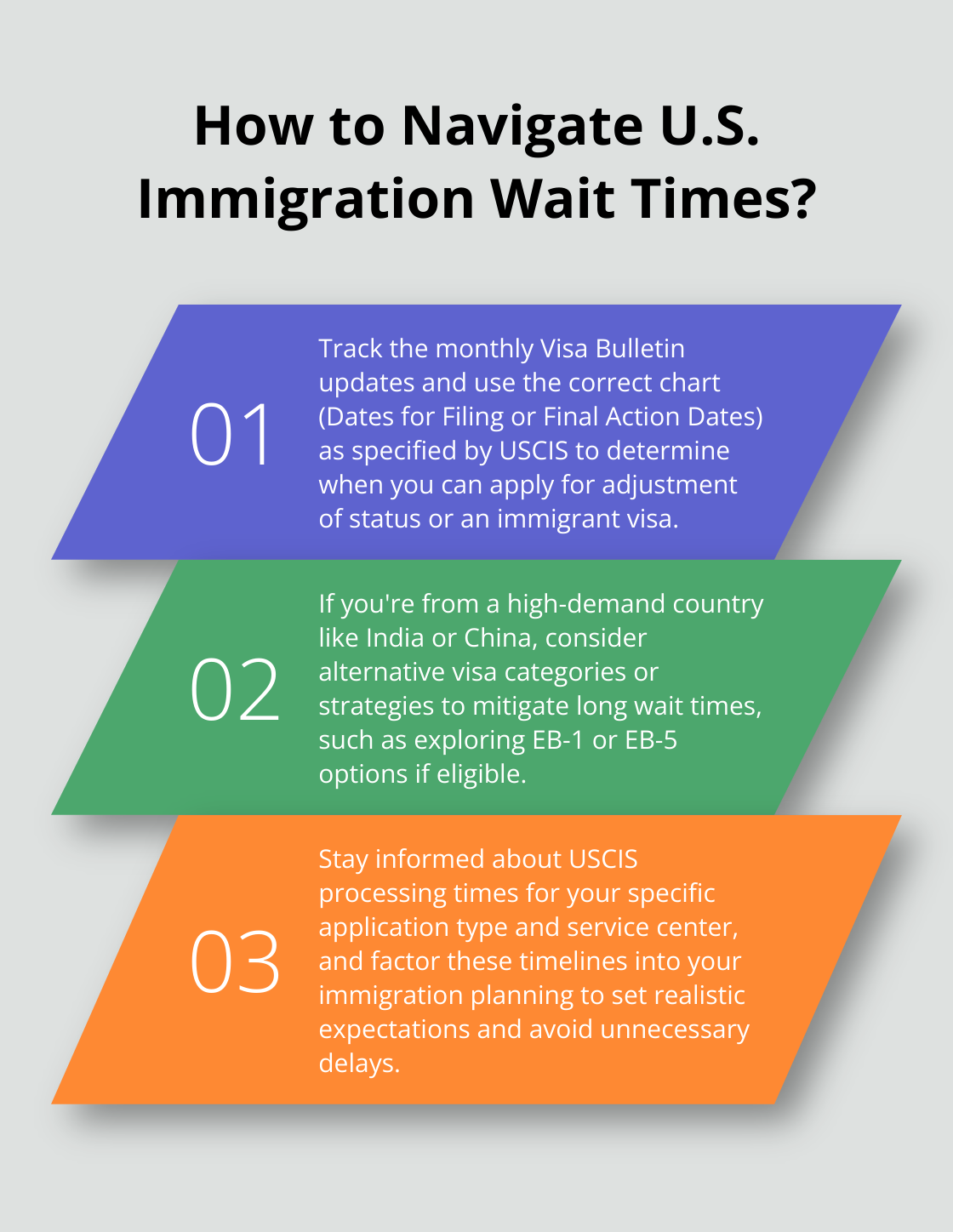
US Green Card Issuance: Annual Numbers Explained
Understanding the intricacies of US Green Card issuance is vital for anyone navigating the immigration process.
At Law Offices of Jeffrey A. Thompson, we often field questions about the number of US Green Cards issued per year and how they’re allocated.
This blog post breaks down the annual green card numbers, explains key factors affecting issuance, and highlights recent trends in this complex area of immigration law.
How Many Green Cards Are Issued Annually?
The U.S. government sets specific limits on the number of green cards issued each year. In fiscal year 2024, the employment-based annual limit for EB-1 visas is 28.6 percent of the worldwide employment limit. This demonstrates the interconnected nature of the green card allocation system.
Family-Based Green Cards
Family reunification remains a cornerstone of U.S. immigration policy. The U.S. allocates approximately 226,000 family-sponsored preference visas each year for relatives of U.S. citizens and green card holders. This category accounts for about two-thirds of legal immigration to the U.S., which highlights its significance in the overall immigration landscape.
Employment-Based Green Cards
The U.S. allocates 140,000 employment-based green cards annually, divided across five preference categories. These categories cater to different skill levels and professional backgrounds (from extraordinary ability individuals to unskilled workers). High-skilled workers, particularly those in the EB-2 and EB-3 categories, often face longer wait times due to high demand and country-specific caps.
Diversity Visa Program
The Diversity Immigrant Visa Program (commonly known as the green card lottery) offers 55,000 visas annually to citizens of countries with historically low rates of immigration to the U.S. This program aims to diversify the immigrant population and provides opportunities for individuals from underrepresented nations.
Actual Issuance vs. Annual Caps
It’s important to note that while these numbers represent the annual caps, actual issuance can vary. Factors such as processing times, backlogs, and policy changes can affect the number of green cards issued in a given year.
Impact on Immigration Strategies
Understanding these allocation numbers and their implications is essential for setting realistic expectations and developing effective immigration strategies. The complex interplay between different visa categories and annual limits underscores the importance of expert guidance in navigating the U.S. immigration system. This complexity leads us to examine the factors that affect green card issuance in more detail.

What Influences Green Card Issuance?
The issuance of green cards in the United States depends on several key factors that shape an applicant’s path to permanent residency. These elements play a significant role in determining the timeline and success of the immigration process.
Country-Specific Limits and Wait Times
Per-country caps on green cards create decades-long backlogs, making the immigration system less efficient and less fair. This cap applies across all preference categories, which creates substantial backlogs for applicants from high-demand countries (such as India, China, Mexico, and the Philippines).

For example, as of 2024, Indian nationals in the EB-2 category face wait times exceeding a decade. Chinese applicants in the EB-5 investor category also experience multi-year delays. These country-specific backlogs can dramatically extend the immigration timeline for affected individuals.
Priority Dates and Visa Bulletin Updates
The U.S. Department of State publishes a monthly Visa Bulletin that determines when individuals can apply for adjustment of status or immigrant visas based on their priority date. This date typically marks the day when the immigrant petition is properly filed with U.S. Citizenship and Immigration Services (USCIS).
The Visa Bulletin contains two charts for each visa category: the “Dates for Filing” and the “Final Action Dates.” USCIS decides which chart to use for accepting adjustment of status applications. Applicants must monitor these dates as they can move forward or backward (retrogress) based on visa demand and availability.
Government Policies and Processing Times
Government policies and administrative changes can profoundly affect green card issuance. The COVID-19 pandemic led to temporary suspensions of certain immigrant visa processing, which created additional backlogs. USCIS processing times also vary widely depending on the type of application and the service center handling the case.
New green cards issued in FY 2020 were 707,000, which covered the end of the Trump administration and the beginning of the COVID-19 pandemic. These delays can significantly impact an applicant’s timeline and planning.
Impact of Legislative Changes
Legislative changes can also influence green card issuance. New laws or amendments to existing immigration policies can alter quota systems, introduce new visa categories, or modify eligibility criteria. These changes can create opportunities for some applicants while potentially complicating the process for others.
Economic Factors
The state of the U.S. economy can impact employment-based green card issuance. During economic downturns, there may be increased scrutiny of labor certification applications or changes in the demand for certain skills, which can affect the approval rates for employment-based green cards.
Understanding these influencing factors forms the foundation for navigating the complex landscape of U.S. immigration. The next section will explore recent trends in green card issuance, providing further insights into the current state of U.S. immigration policy and practice.
How Green Card Numbers Have Changed Recently
Fluctuations in Green Card Issuance
USCIS completed about 7 percent more adjustment of status applications in FY 2022 (611,000) than in FY 2021 (572,100). This increase followed reduced immigration during the COVID-19 pandemic. The Department of Homeland Security’s Yearbook of Immigration Statistics provides these figures, offering a comprehensive view of recent trends.
Impact of Global Events on Immigration
COVID-19 significantly disrupted green card issuance. In fiscal year 2020, the U.S. issued fewer new green cards, reflecting the impact of travel restrictions and reduced processing capacity. This sharp decline affected all categories of immigrants, with family-based and employment-based applicants experiencing prolonged wait times.
Shifts in Employment-Based Categories
Employment-based green card issuance has seen notable changes. In fiscal year 2022, the U.S. utilized all available employment-based immigrant visas, with more than 147,000 adjustment of status applications approved. This trend highlights the high demand for skilled workers in the U.S. job market.

The EB-2 and EB-3 categories for professionals and skilled workers have experienced particularly long wait times, especially for applicants from India and China. As of 2024, Indian nationals in the EB-2 category face particularly long waits (underscoring the need for strategic planning in the immigration process).
Family-Based Immigration Patterns
Family-based immigration continues to serve as a significant pathway for green card acquisition. However, processing times for these applications have increased in recent years. As of October 2024, a significant portion of Form I-485 applications were pending for over six months, indicating substantial delays in the adjustment of status process.
Diversity Visa Program Trends
The Diversity Visa Program (which allocates up to 50,000 green cards annually) has maintained its role in diversifying the immigrant population. However, global events and policy changes have affected the program’s implementation in recent years, leading to fluctuations in the number of visas actually issued under this category.
Final Thoughts
The US issues a limited number of green cards per year, subject to various caps and limitations. Family-based and employment-based categories form the bulk of allocations, while the Diversity Visa Program adds diversity to the immigrant population. Country-specific limits, priority dates, and government policies significantly impact the green card process, often leading to extended wait times for applicants from high-demand countries.

Recent years have seen fluctuations in US green cards per year, influenced by global events and shifts in immigration policies. The immigration landscape constantly evolves, and changes in policies or processing procedures can profoundly affect individual cases. Regular updates from official sources and expert guidance prove invaluable in navigating this complex system effectively.
At Law Offices of Jeffrey A. Thompson, we specialize in guiding clients through the intricacies of the US immigration system. Our expertise spans various aspects of immigration law, including family-based and employment-based green card applications. We provide personalized assistance to help clients understand their options, prepare necessary documentation, and navigate potential hurdles in the process.


